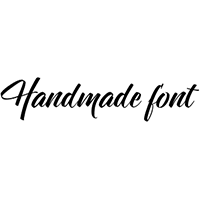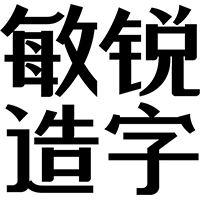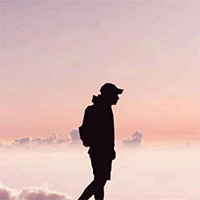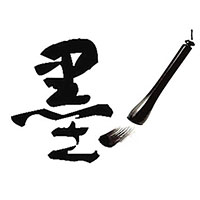ScreenFonts: A Good Old Fashioned Orgy, Contagion, Drive, Machine Gun Preacher

Phew, we've got a pretty hefty episode this time. The posters of eighteen films are worth taking a closer look at, so I guess we'd better jump right in. Let's get this show on the road…
I think I understand what they were aiming at with the movie poster for Shark Night 3D. However it's pretty pointless trying to improve on the original Jaws visual which has become an icon of contemporary cinema and popular culture in general. Comparing both posters shows that modernising the image and making it more dynamic doesn't necessarily improve on it. It is exactly the chilling symmetry and deceptively static construction that makes the original poster so powerful and frightening. Unless the tribute was unintentional, which makes even more poignant the fact that any poster for a shark movie will inevitable be compared with this classic image.
The movie title set in Akzidenz-Grotesk Extended, reversed in white, mimics the dynamism of the image. Yet I think it would have looked better if it had followed the diagonal created by the shark and the girl. Adding the red splashes seems to be a rather gratuitous attempt at suggesting the bloody aftermath of a shark attack.
As Straw Dogs is a remake of the classic and controversial Sam Peckinpah movie starring Dustin Hoffman, its poster revisits the original even more literally, complete with white border with black hairline and movie title in a blocky sans. Unfortunately this re-imagination is weaker. The coloured reflection of Alexander Skarsgård in the broken lens of James Marsden's glasses and the tagline in big red Neue Helvetica Extended don't add anything, but on the contrary take away from the power of the image. The only thing that kind of works in favour of the new version is the white silhouette as counter for the "O".
If you are a regular reader of this series you'll know by now I am always intrigued by alternate versions of movie posters. As the IMPAwards website doesn't really provide context nor background information, it is difficult to find out why certain of these were created. Take for example the movie poster for The Debt designed by Empire Design in the UK. Let's compare it to this other poster by California-based Ignition Print. The components that make up the design are almost identical – three horizontal bands with a big moody portrait of Helen Mirren at the top, slightly different depictions of Sam Worthington and Jessica Chastain in action at the bottom, and in between the movie title in a wide grotesque and the credits.
The version of the left treats the text in a subdued manner, with lots of white space. The one on the right adds a lot of graphic elements, making it resemble a late eighties, early nineties pomo design. Though the left poster looks classy and is easier to decipher, I quite like the busyness of the text area in the right poster, with its frankly superfluous but fun rulers and the stylised building in the corner.
The movie poster for Salvando al Soldado Pérez (Saving Private Perez) is so bad it's good again. Everything about it is so wrong, from the gaudy Arabian gilded frame over the comic book-like treatment of the photographs to the metallic three-dimensional treatment of the type. The eponymous Stencil, the most pedestrian of all stencil faces (even the name is generic), is the perfect candidate for this campy design.
I don't know what it is about Cooper Black, but when a comedy includes sexy bits somehow it makes for a better fit than the customary heavy sans serifs – Futura Extra Bold, Gill Sans Ultra Bold, Compacta Black, Flyer Condensed Black and the likes. I guess it is the curvaceous, voluptuous letter forms and the chubby roundness of the serifs that lend the face its sensuous connotations. The typeface exactly and efficiently does what is expected from it on the movie poster for A Good Old Fashioned Orgy.
I was quite surprised to discover no less than four (mainly) typographic posters amongst this month's releases. The first one is this alternate poster for A Good Old fashioned Orgy. It reduces the concept of the movie to a simple, modernist interpretation, combining the icons for male and female into an intricate mesh. This clean, corporate-like design is quite subversive. What looks like a cover for an academic publication or business report actually advertises visceral group sex. This makes the use of Futura all caps even more funny – for typo-geeks like me anyway.
In the case of Serge Gainsbourg, vie héroïque (Gainsbourg: A Heroic Life) I am not really interested in the original French movie poster as it does very little with the iconic image of the enfant terrible of French music (and cinema). Nor am I particularly enthusiastic about the international poster which suffers from horror vacui.
No, the design I am really excited about is this alternate poster. It uses the same photograph as the original French poster, selectively colours the white parts in red and blue, and then beautifully integrates the typography in a slanted slender grotesque, with the name Gainsbourg big and white to complete the French flag.
The waterfall composition which is based on the slant of the characters is gorgeous, lovingly laid out in the black area, with some text elements gently intruding the silhouette of the French singer-songwriter. While the composition seems freeform, closer inspection teaches us that specific parts are subtly structured: for example the actors' names above the movie title are locked to the left side of (top to bottom) the B, U, and O respectively. Comparing this design with the original French poster convincingly shows how important a role typography plays.
Same problem with Contagion. The main poster does its job adequately, nothing more. Distressing the image and the all caps monospaced grotesque Orator can't hide that this is a fairly mainstream design.

However this typographic poster is the one that caught my eye. A succession of names of cities struck by the contagion in the movie – set in an extra-bold compact sans – forms its title vertically. Fading the other letters aids the readability of the design.
Another design that plays with type is the movie poster for I Don't Know How She Does It. All the tasks managed by Sarah Jessica Parker are enumerated in the right are of the poster delineated by her silhouette. The words of varying sizes are reversed in all caps have Alternate Gothic out of the green background. Meh, doesn't really work, and I don't understand how la Parker okayed that unflattering photograph of her.
In What's Your Number?, our fourth typographic poster this episode, Linotype Didot numbers were twisted in a Salvator Dalí-esque heart. Again, a commendable effort, but not my thing.
From one generic main poster to the next, the movie poster for Warrior seems to be advertising a straight-to-DVD release. The metallic shine on the Helvetica capitals matches the one on the ripped bodies of the main protagonists in the movie.
It is less conspicuous because the movie title runs vertically, but the kerning is flawed. The A is too close to the W and too far from the R. If you want to try your hand at manually redistributing space between letters, have fun with the KernType game.
Strangely the last spring.

The portrait of iconic activist Angela Davis with a giant afro, closely cropped, makes the original poster for Reid Miles. The colour palette in the image is delightful, as is its graininess. It is intriguing to see how the unadorned, mechanic flush-left setting of H&FJ Mercury at the top of the poster, in white and only two sizes, actually makes the design look more artful.
The typography in the international poster is a little more sophisticated. Using Baskerville Original from the Storm Type Foundry, a fresh addition to the FontShop portfolio, strengthens the Blue Note Records/Reid Miles connection. As I am not very good with colours I often resort to the system used here – picking them from the image itself, in this case a delicate turquoise blue and a desaturated reddish orange.
I won't even get into how bad a Photoshop hack job the movie poster for Main Street is, but it suffers from such a severe case of "Confused Actors Syndrome" it's beyond ridiculous…
Remember the whole Avatar / Papyrus-controversy of two years ago? Well, we may have a new one on our hands with the movie poster for Drive. Quite a few people take offence over the typeface, described as a hilariously outdated pink font and a surprisingly girly, '80s-style font (…) arguably better suited to a poster for an '80s cheerleader flick, used in the gory thriller's mysterious ad campaign. Nicolas Winding Refn wanted indeed to pay tribute to '80s cinema, more specifically the movie Risky Business. It makes sense as the director filmed Drive in a style that evokes the 1980s, and the movie is scored with the kind of synthesizer-heavy pop music so pervasive in that period. In an interview on IFC News Refn says
I wanted that kind of font because it's timeless, in a way. It's like a hand drawn logo.
Well, I'll have to disappoint Refn because I don't agree. First of all the typeface is far from a timeless design, but a poor-quality, blatant rip-off of Roger Excoffon et la fonderie Olive. Second, if you are going to pay homage to an old(er) movie you'd better get it right. The typeface could have been a lot more resemblant, and anyhow I prefer by far an update of the typeface or lettering style. In this case I think Electrasonic would have been so much better – a contemporary design firmly rooted in the '80s style, conceptually much more similar to the original Risky Business poster. Another option would have been a connected chrome script like Permanent Waves that also refers to car brands and model logos.
The story of a terminally ill teenage girl who falls for a boy who likes to attend funerals is visualised very sweetly in the movie poster for Restless. With dark yet tender humour the chalked outline around the young lovers' bodies, like at a murder investigation scene, perfectly nails the difficult theme.

I am not so much interested in the movie title set in ITC Franklin Gothic, but rather in the thoughtful setting of Didot. In this cluster composition the ball ending of the tail on the "y" cleverly substitutes the tittle on the "i". It really is a shame this poster is marred by the actors' names and credits in squooshed™ Avenir.
In this FF Duper.
Poster for an inspirational film, "based on a true story"? Move over Trajan, here's H&FJ Gotham. I do appreciate the snapshot-like photograph that looks and feels "real", not a Photoshopped Frankenstein-like concoction.
The movie poster for Abduction is one of the best designs I've seen for a mainstream action flick. The dynamism of the running Taylor Lautner is enhanced by the static in the image and the double-exposure-style repeated fragments. The cross-like motif created by Taylor's silhouette intersecting with the horizontal band holding the movie title in Helvetica works really well. The blue wash renders the whole image very stylish…
… but also very reminiscent of the poster for Jumper (discussed on Unzipped almost four years ago) down to the cityscape at the bottom and the white background. Then again Hayden Christensen's pose was in turn very similar to Neo's in the Matrix posters, so we won't be pointing fingers. The typeface here is the square sans serif Agency, together with Bank Gothic a staple for action movies.
Yet what to do when the action movie is based on an inspirational true story? Instead of choosing between the two possible visual interpretations Machine Gun Preacher simply has two posters, one in each style. The main poster clearly sticks to the conventions of action movies. Gerard Butler defiantly stares down the viewer, machine gun in one hand and protecting a little kid with the other, with the movie title in ballsy Rockwell Extra Bold. Positioning the text over Butler's shoulder and chest leaves more room for the image to breathe.
The arthouse-style alternate poster cleverly suggests the cross by overlaying four rectangles on the picture. Gerard Butler's character is nicely emphasised by the vertical gap, while the group of children walking through the savannah is framed by the horizontal gap. The colour palette with grays and desaturated greens is both classy and beautiful. It's a shame that Helvetica has become such a cliché in posters for "quality" indie films.
We end this instalment with a first-hand account of the use of Trajan in movie posters. Andrew Percival, Senior Vice-President at Mojo was so kind to reply to a couple of questions, and explained why Trajan was selected for the poster for Dream House.
The title treatment was supplied to us. This happens unfortunately quite often – I would estimate that as many as 1 in 10 posters we design have 'applied' type. As far as I can tell, a client often is reviewing early cuts of trailers while we go through the creative process in print, and seemingly will often fall for the logo used in the trailer. Now, there are many very talented and creative people in the audio visual motion graphics field and sometimes the type mandated to us is quite good, well considered, but more often than not it ends up being a 'default' choice, and we designers are told to stick it on the poster.
As one can imagine this can be rather demoralizing, as all the time and thought that we might put into a particular type choice for a particular image is unceremoniously cast aside to make way for a logo set in Trajan! Not to mention having then to actively set all the other type to partner well with that logo.
The opposite happens too – but we wish it did a lot more regularly.
I'm not sure I can recall a client ever asking for a specific typeface, Trajan or otherwise. More often than not we are directed to achieve a certain vague 'look' with the type. And sometimes, it is really hard to find a better fit than Trajan! The reason for its ridiculous level of popularity in film poster design is that it works so well; but we at Mojo do our level best to avoid it, search for another solution, find a typeface that exudes all the same elegant, timeless, classic properties that Trajan seems to have, and that studios often want from their posters.
So, no, I haven't had a direct debate with a client over the use of the typeface. We operate a little more obliquely and continue to offer other options that we consider are more appropriate, thoughtful and unique and hope that no-one notices that they aren't Trajan!
But this whole discussion about the overuse of certain typefaces in poster design – Trajan, Gotham, Gill Sans Extra Bold is an interesting one, and I'm often torn when considering the issue. In the film poster design field, particularly when marketing big 'tent-pole' films, it is our responsibility to quickly and efficiently convey a certain feel or reference point to the potential film-goer – this film is a high quality academy award worthy drama; it's a forward thinking 'celebral' film; it's a fun goofy broad comedy…
Now, as designers, we all strive tirelessly for innovation, originality and creativity, but sometimes when you need to convey such themes without equivocation, it is very hard to find typefaces that do so any better than the aforementioned ones. While I personally do not directly promote the use of these work-horse typefaces within my group (except perhaps occasionally Gotham since it's so beautiful) and would prefer that we find more unique and ownable solutions, I completely understand when and why they appear on one-sheets and, if the use is appropriate, I am not so quick to criticize.


































 闽公网安备35010202000240号
闽公网安备35010202000240号